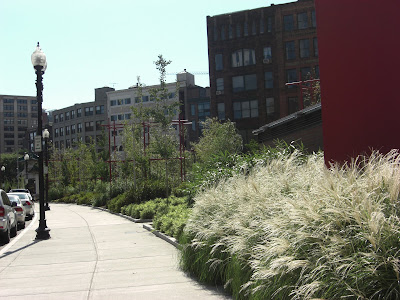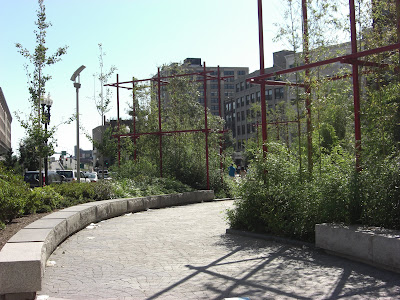Up for comment/suggestions/criticism -
I am best described as an interdisciplinary architectural designer most interested in the social and ecological implications of urbanism and the built environment. My professional experiences have taught me how the convergence of design with global perspectives and fields such as sociology and ecology can intensify the richness and integrity of a problem solution. It is my professional goal to employ and develop practices of ecological planning to globally better cities through sustainable design.
Where I grew up, neighbors exchanged homegrown harvests of tomatoes, corn, squash, grapes, and various other items. Overgrown roadside ditches held and conveyed excess storm water until it could infiltrate back into the land with time. These minor institutions show a latent sustainability and help to create a societal connection to nature. This human connection to nature is one I took for granted before moving from rural North Carolina to the cities of Boston, MA, and then to New York, NY where I reside today. Working in urban architecture and landscape architecture and being exposed to the municipal agencies who strive to maintain one of the world’s greatest cities, I am reminded each day of the severe disconnect between urban life and the forgotten natural ecologies struggling to persist in cities.
Studying architecture within a program that focused on the recognition and analysis of the urban environment broadened my perspective to seek inspiration in landscape architecture and sociological thought. By the time I entered graduate school, my degree was a Masters of Architecture, but my thesis project began with the social implications of urban park space from historic through contemporary times. In researching my thesis I came across a well-established premise in landscape architecture and urban design derived from Transcendentalism which has continued with me - within a natural setting, people can come together on an equal ground - regardless of race, gender, or other societal constraints. In considering the degradation of nature, the state of the earth’s environment, and questions of human equality in the midst of globalization, I am struck by a necessity as a design professional to look back to nature and extract ecological knowledge capable of informing architecture.
I was the first member of my family to have the opportunity to travel abroad. I have long held a fascination with new cultures and languages, so worked hard through college to save money to fund short trips and eventually to spend a semester abroad. I have studied German among internationals in Dresden and tutored English in New York, learning in both cases to step back from situations and observe without presuppositions to comprehend cultural variations. My interactions across cultural boundaries have taught me the duality of culture - as one learns from others, one also becomes more aware of himself. Further, having found travel to provide a unique understanding of the architecture and urban design field, I consistently strive to experience more of the world’s historic and contemporary built environment, to better inform projects of my own.






